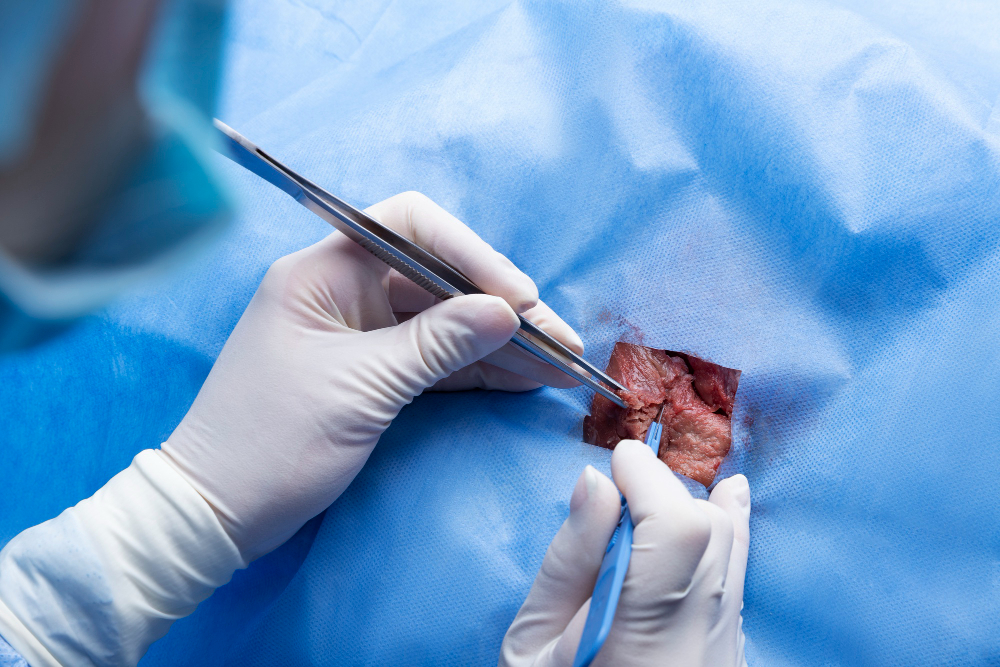Micro Disc Surgery

Microdiscectomy, also known as micro decompression, is a minimally invasive surgical procedure designed to relieve pressure on a spinal nerve root by removing a portion of a herniated or degenerative disc in the spine. This procedure is commonly performed to alleviate symptoms such as sciatica, leg pain, and lower back pain caused by herniated discs.
Procedure
Preparation
- Anesthesia: The patient is administered general anesthesia to ensure they are asleep and pain-free during the surgery.
- Positioning: The patient is positioned face down on the operating table, allowing optimal access to the affected area of the spine.
Surgical Steps
- Incision: A small incision, typically 1 to 1.5 inches long, is made in the skin over the affected disc.
- Muscle Separation: Using a retractor, the surgeon gently moves the muscles and tissues aside to access the spine without cutting through them.
- Visualization: An operating microscope or specialized glasses (loupes) are used to provide a magnified view of the area.
- Disc Removal: A small portion of the bone covering the nerve root (lamina) is removed to provide access to the herniated disc. The surgeon then removes the herniated portion of the disc, relieving pressure on the nerve.
Closure
- Muscle Realignment: The muscles and tissues are carefully moved back into place.
- Suturing: The incision is closed with sutures or surgical staples, and a sterile bandage is applied.
Recovery
- Immediate Post-Op: Patients are typically monitored for a few hours in a recovery room before being discharged. Most patients go home the same day.
- Short-Term Recovery: Pain and discomfort are common for a few days following the surgery. Pain medication may be prescribed to manage this.
- Physical Therapy: A physical therapy program is often recommended to aid recovery, strengthen the back muscles, and improve flexibility.
- Long-Term Outcomes: Many patients experience significant pain relief and return to normal activities within a few weeks to a few months.
Benefits
- Minimally Invasive: The small incision and minimal muscle disruption result in a quicker recovery and less post-operative pain compared to traditional open surgery.
- Effective Pain Relief: Microdiscectomy is highly effective in relieving leg pain (sciatica) and other symptoms caused by nerve compression.
- Quick Recovery: Most patients can resume normal activities within a few weeks, with full recovery taking a few months.
Risks and Considerations
- Infection: As with any surgery, there is a risk of infection, which can be minimized with proper post-operative care.
- Nerve Damage: Although rare, there is a small risk of damage to the spinal nerves during the procedure.
- Recurrence: There is a possibility of disc herniation occurring again at the same site or at a different level in the spine.


